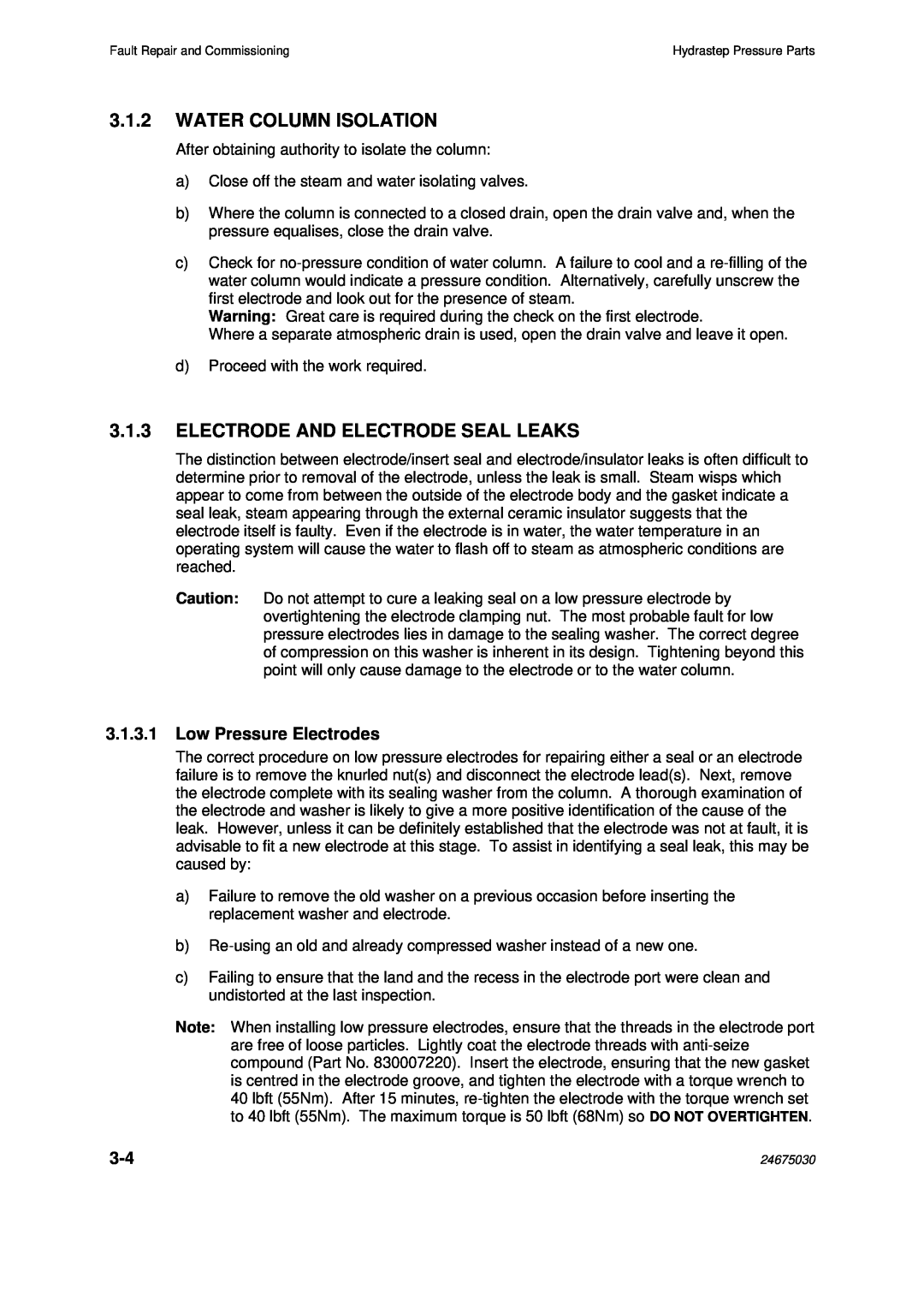Fault Repair and Commissioning | Hydrastep Pressure Parts |
3.1.2WATER COLUMN ISOLATION
After obtaining authority to isolate the column:
a)Close off the steam and water isolating valves.
b)Where the column is connected to a closed drain, open the drain valve and, when the pressure equalises, close the drain valve.
c)Check for
Warning: Great care is required during the check on the first electrode.
Where a separate atmospheric drain is used, open the drain valve and leave it open.
d)Proceed with the work required.
3.1.3ELECTRODE AND ELECTRODE SEAL LEAKS
The distinction between electrode/insert seal and electrode/insulator leaks is often difficult to determine prior to removal of the electrode, unless the leak is small. Steam wisps which appear to come from between the outside of the electrode body and the gasket indicate a seal leak, steam appearing through the external ceramic insulator suggests that the electrode itself is faulty. Even if the electrode is in water, the water temperature in an operating system will cause the water to flash off to steam as atmospheric conditions are reached.
Caution: Do not attempt to cure a leaking seal on a low pressure electrode by overtightening the electrode clamping nut. The most probable fault for low pressure electrodes lies in damage to the sealing washer. The correct degree of compression on this washer is inherent in its design. Tightening beyond this point will only cause damage to the electrode or to the water column.
3.1.3.1Low Pressure Electrodes
The correct procedure on low pressure electrodes for repairing either a seal or an electrode failure is to remove the knurled nut(s) and disconnect the electrode lead(s). Next, remove the electrode complete with its sealing washer from the column. A thorough examination of the electrode and washer is likely to give a more positive identification of the cause of the leak. However, unless it can be definitely established that the electrode was not at fault, it is advisable to fit a new electrode at this stage. To assist in identifying a seal leak, this may be caused by:
a)Failure to remove the old washer on a previous occasion before inserting the replacement washer and electrode.
b)
c)Failing to ensure that the land and the recess in the electrode port were clean and undistorted at the last inspection.
Note: When installing low pressure electrodes, ensure that the threads in the electrode port are free of loose particles. Lightly coat the electrode threads with
24675030 |
